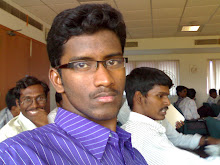Kalam's 10-point vision for a competitive India
Global competitiveness for any nation is indeed a big challenge. For achieving such a competitive edge for a nation, it is essential to have a vision. I would like to share with you my visualisation of such a nation.
1. A nation where the rural and urban divide has reduced to a thin line.
2. A nation where there is an equitable distribution and access to energy and quality water.
3. A nation where agriculture, industry and service sector work together in symphony, absorbing technology thereby resulting in sustained wealth-generation leading to greater high value employment opportunities.
4. A nation where education is not denied to any meritorious candidates because of societal or economic discrimination or because of constraints of rules.
5. A nation which is the best destination for the most talented scholars, scientists, and investors from all over the world.
6. A nation where the best of healthcare is available to all and the communicable diseases like AIDS/TB, water and vector borne diseases and other stress diseases, cardiac diseases, cancer and diabetes are brought down.
7. A nation where the governance uses the best of the technologies to be responsive, transparent, fully connected in a high bandwidth e-governance grid, easily accessible and also simple in rules, thereby corruption free.
8. A nation where poverty has been totally eradicated, illiteracy removed and crimes against women are absent and none in the society feels unalienated.
9. A nation that is prosperous, healthy, secure, peaceful and happy and continues with a sustainable growth path.
10. A nation that is one of the best places to live in on the earth and brings smiles on the one billion-plus faces.
Societal grid
To maximise the synergy between the various components of education, healthcare, e-governance, rural development we need to establish connectivities among them. These connectivities will certainly bring seamless access and information flow among the various domains leading to maximisation of GDP and productivity; hence, there is need for establishing the grids, namely knowledge grid, healthcare grid, e-governance grid and the PURA knowledge grid.
This interconnecting grid will be known as societal grid. Knowledge sharing, knowledge utilisation and knowledge re-use is very vital by all constituents of the society for promoting non-linear growth. The societal grid consists of:
Knowledge grid: Interconnecting universities with socio-economic institutions, industries and R&D organisations.
Healthcare grid: Interconnecting the healthcare institutions of the government, corporate and superspeciality hospitals. Research institutions, educational institutions and ultimately, pharma R&D institutions.
E-governance grid: Interconnecting the central government and state governments and district and block level offices for G2G and G2C connectivity.
PURA knowledge grid: Connecting the PURA nodal centers with the village knowledge centres and domain service providers. Since this is the backbone for rural development, all other grids will infuse the knowledge into this grid for sustainable development, healthcare and good governance.
For example, five of the Periyar PURA villages have now connected using Wi-Max connectivity. Integrated village knowledge centers will act as an inter-connected delivery mechanism for tele-education, tele-medicine and e-governance services apart from individual access by the people, within and between the village knowledge centres through the PURA grid.
We have, so far discussed all the four connectivities required for the societal transformation. These connectivities can form the basis for providing platform for societal transformation leading to empowerment. This will blossom with the enabling environment of trust and confidence in the overall system.
Wednesday, December 31, 2008
Profile of a globally competitive nation
Posted by santhoshkumar at 10:20 PM
Subscribe to:
Post Comments (Atom)

0 comments:
Post a Comment